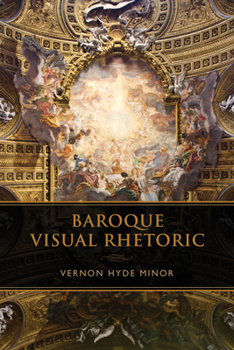Baroque Visual Rhetoric
Intricate, expressive, given to grandeur and even excess, Baroque art as a style is inseparable from the meanings it seeks to convey. Vernon Hyde Minor's Baroque Visual Rhetoric probes this combination of style and message and - equally importantly - the methodological basis on which the critical art historian comes to establish that meaning.
Drawing on a breathtaking range of critical literature, from the German founders of art history as an academic discipline to Heidegger, Derrida, and de Man, Minor considers the issue through a series of Baroque masterpieces: Bernini's Baldacchino in St. Peter's Basilica, the statues in the church of San Giovanni in Laterano, Borromini's church of Sant'Ivo alla Sapienza, Baciccio's frescoes in the church of Il Ges , the paintings of Philippe de Champaigne, and the Corsini Chapel in San Giovanni in Laterano.





